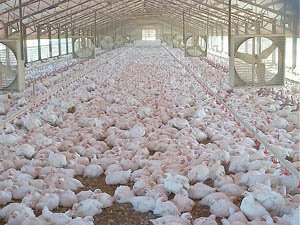Following our
post earlier today on party-funded scientific research, we've had a chance to review a related paper by Professor William G. Childs of the Western New England College School of Law. Entitled "
The Overlapping Magisteria of Law and Science: When Litigation and Science Collide," the paper addresses two possibly unintended consequences of
Daubert and its progeny: litigation-driven scholarship, and discovery into the peer-review process. It mounts plausible arguments that: (a) existing or potential institutional checks, both legal and scientific, can ameliorate negative consequences from bias in litigation-driven research; and (b) discovery into the peer-review process is one of them, and may actually help to incentivize better peer review.
Certainly Prof. Childs is right that the law of evidence cannot respond to party-funded research with a rule of blanket exclusion. Such a solution would fall prey to the genetic fallacy, and would also ignore the fact that litigation-driven research is often desirable and beneficial. Sometimes, indeed, it may be the
only research on the matters in controversy, because nobody would much care to research them but for their actual or potential pertinence to some legal claim.
We think we also agree with Prof. Childs's view that discovery into the peer-review process is a potentially helpful check on bias. The danger of bias arises largely from the imperfection, and the limited scope, of peer review itself. Because peer review is sometimes cursory, and because it virtually never involves a full, direct, independent investigation into all of the author's research and data, it's possible for interested parties, in concert with affiliated experts, to get work past the peer reviewers and into the published literature, and then to invoke the peer reviewers' imprimatur in subsequent litigation, even if the research might not stand up very well under closer scrutiny. If peer review is to remain a factor in evaluating admissibility under prevailing evidentiary law, it seems sensible to permit litigants to test what the peer review really entailed, and how searching it really was.
Might discovery into peer review exert too strong a chilling effect? Prof. Childs thinks that's doubtful, in part because only a very small share of published scientific articles end up playing any significant role in litigation. We suspect he's right about that. More fundamentally, he's probably right that one person's "chilling effect" is another person's "incentive to conduct peer review carefully." Trial judges do vary in their zeal to regulate abusive discovery practices, but if that's a problem, immunizing peer review from discovery would be too draconian a solution, given the central importance that peer review can assume in
Daubert proceedings, and in legal controversies more broadly.
Prof. Childs has some ideas about where to draw the discovery-regulating lines, and not everybody will agree with those ideas in every particular. But the subject does warrant discussion and debate. One important question is who should compensate peer reviewers for responding to third-party discovery requests. Prof. Childs touches on this topic only briefly, noting that litigants often end up paying for deponents' time, and suggesting that journals could indemnify their reviewers for their time and legal costs. We worry, though, that a solution relying
only on indemnity could pose substantial economic burdens on scholarly publications. (Would publishers need to purchase insurance, in case litigators took an economically ruinous interest in something from their publications?) Indemnity might also pose problems of "moral hazard," if peer reviewers responding to discovery found it costless (and perhaps even income-enhancing) to spend whatever time, and incur whatever legal fees, they chose, regardless of the need therefor. Such concerns could be abated, perhaps, through a rebuttable presumption that compensation for the reviewers' time should come from the deposing party. But we'd have to think about it more, to be sure.


